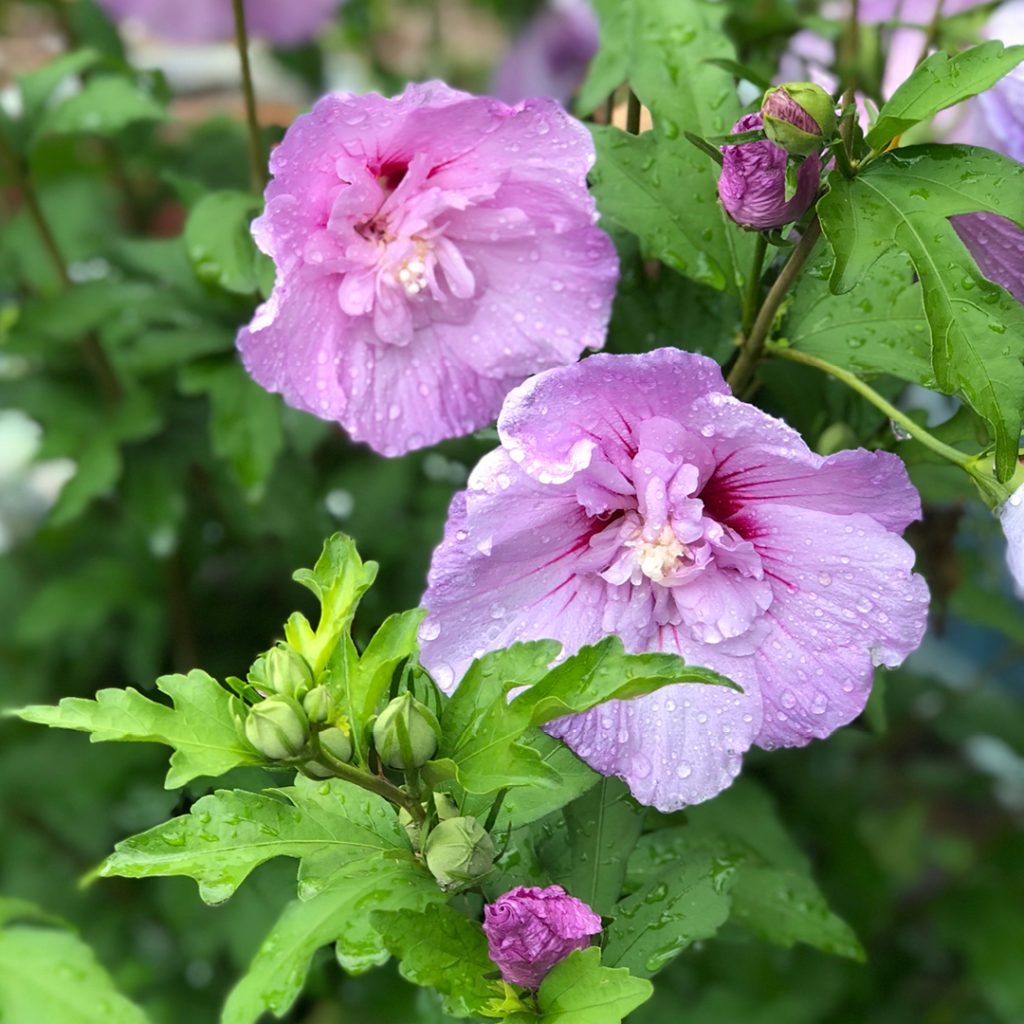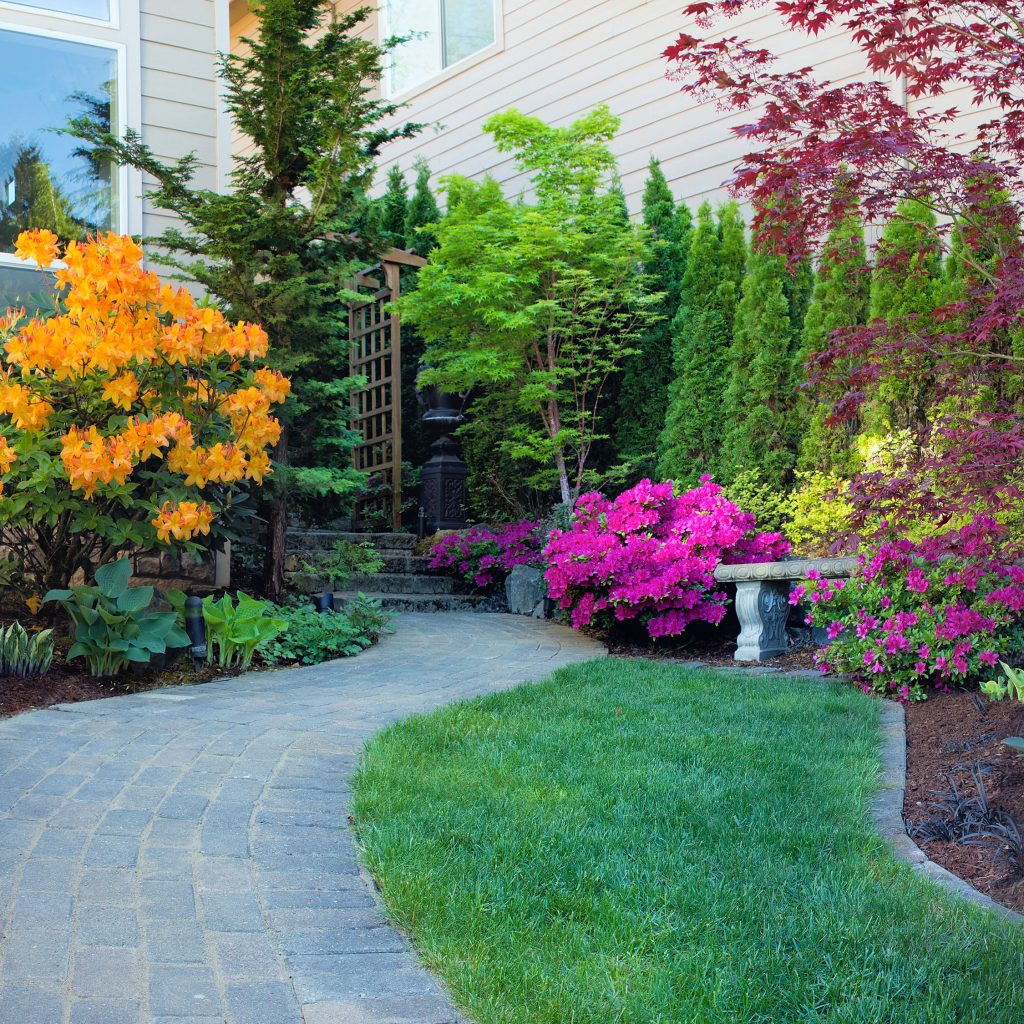As avid gardeners, we tend to focus on individual plants’ colorful blooms and lush foliage: that specimen tree, the rare perennial, or the colorful flowering shrub. However, there’s one often-overlooked garden feature that can significantly enhance the beauty, functionality, and biodiversity of your outdoor space: the hedge. Hedges are not just for grand estates or formal gardens; they can be a valuable addition to any size property, adding structure, privacy, and habitat for wildlife. Here’s why you should consider planting hedges in your home garden:
Definition and Structure
Hedges may be short or tall and provide a sense of definition and structure to your garden. They can delineate boundaries, create outdoor rooms, or frame specific areas within your garden. By defining spaces, hedges add visual interest and help organize the landscape, making your garden feel more cohesive and intentional.
Privacy and Screening
In an era where outdoor living spaces are becoming increasingly important, hedges offer natural privacy and screening from neighboring properties or busy streets. Unlike fences or walls, hedges soften the landscape and create a green barrier that not only provides privacy but also absorbs noise and reduces pollution. Whether enjoying a morning coffee on the patio or hosting a backyard barbecue, hedges can create a secluded retreat right in your own backyard.
Wildlife Habitat
Hedges act as valuable wildlife habitats, providing food, shelter, and nesting sites for birds, insects, and other small creatures. Native species such as hawthorn, holly, and viburnum are particularly beneficial, offering berries for birds and nectar for pollinators. By planting a diverse mix of native shrubs, you can attract a variety of wildlife to your garden, creating a thriving ecosystem right outside your door.
Seasonal Interest
Many hedge plants offer year-round interest, with evergreen species providing structure and color even in the depths of winter. Deciduous hedges, on the other hand, provide a changing tapestry of foliage, flowers, and berries throughout the seasons. The traditional, formal monoculture hedge still has a place in the landscape; however, a mixed hedge allows you to select a combination of plants with varying textures, colors, and bloom times. The mixed hedge can provide visual interest and beauty year-round.
Low Maintenance
Once established, carefully selected species are generally low-maintenance, requiring minimal pruning and care compared to many other garden plants. Regular trimming will help maintain the desired shape and density, but beyond that, most hedges are relatively self-sufficient.
Plant Selection
Creating a mixed hedge border is like composing a beautiful symphony of flowers, foliage, fruit, and such, with each plant playing its own unique role. We’ve provided some guidance on selecting and arranging plants for a harmonious mixed hedge border, incorporating short, medium, and tall plants to achieve a pleasant balance.
Before diving into plant selection, consider the purpose of your hedge. Are you looking for privacy, wind protection, or a garden structure, or are you simply looking to add aesthetic appeal? Knowing your purpose will help you choose the right plants for your hedge. It is best to first lay your design out on paper. This will ensure that you have enough room for your desired selections.
Also, while in the planning stages, consider factors such as sunlight and soil. Choose species well-suited to your climate and growing conditions, and aim for a mix of plants to maximize biodiversity and resilience. Consider incorporating fruiting and flowering species to attract pollinators and beneficial insects.
Short Plants (Under 3 feet)
Plants shorter in stature will form the front row of the hedge border. They may also be used as a monoculture to provide a structural border for an otherwise unruly flower bed or to line a walkway.
- Boxwood (Buxus sempervirens)
- Lavender (Lavandula spp.)
- Dwarf Korean Lilac (Syringa meyeri)
- Japanese Holly (Ilex crenata)
- Creeping Thyme (Thymus praecox)
- Dwarf Yaupon Holly (Ilex vomitoria ‘Nana’)
- Blue Star Juniper (Juniperus squamata ‘Blue Star’)
- Dwarf Alberta Spruce (Picea glauca ‘Conica’)
- Rock Cotoneaster (Cotoneaster horizontalis)
- Dwarf English Boxwood (Buxus sempervirens ‘Suffruticosa’)
Medium Plants (3 to 6 feet)
Medium-sized plants form the middle layer of the hedge, adding depth and texture. They provide a transition between the shorter and taller plants, and this is where many flowering species may be incorporated.
- Spirea (Spiraea spp.)
- Viburnum (Viburnum spp.)
- Forsythia (Forsythia spp.)
- Barberry (Berberis thunbergii)
- Mock Orange (Philadelphus coronarius)
- Potentilla (Potentilla fruticosa)
- Weigela (Weigela florida)
- Dwarf Burning Bush (Euonymus alatus compatus)
- Rose of Sharon (Hibiscus syriacus)
- Dogwood (Cornus spp.)
Tall Plants (Over 6 feet)
Tall plants are positioned at the back of the hedge border, providing structure, height, and a backdrop for the garden.
- Arborvitae (Thuja occidentalis)
- Privet (Ligustrum spp.)
- Holly (Ilex spp.)
- Elderberry (Sambucus spp.)
- Summersweet Clethra (Clethra alnifolia)
- Tall Fescue Grass (Festuca arundinacea)
- Red Twig Dogwood (Cornus sericea)
- Eastern Red Cedar (Juniperus virginiana)
- Leyland Cypress (Cupressocyparis leylandii)
- American Holly (Ilex opaca)
Hedges are a versatile and valuable addition to the home landscape, offering beauty, function, and ecological benefits in equal measure. Whether you’re looking to create privacy, attract wildlife, or add structure to your landscape, planting a hedge is a worthwhile choice. So why wait? Get out there and start planning and planting your hedge today, and watch as your garden transforms into a vibrant and biodiverse oasis for both you and your local wildlife to enjoy.















